In engineering mechanics, a non-concurrent force system refers to a group of forces whose lines of action do not intersect at a single point. These forces may act on different parts of a rigid body and can include forces and moments (torques). To achieve equilibrium in such systems, a body must satisfy both conditions above.









a. Calculate the location of the resultant from point D.
b. Prove that the resultant force intersects point E (as indicated below)
c. Determine the distance dx and dy from point D to the resultant force and indicate the location relative to D.
d. Determine the distance from point B to the resultant force.
e. Resolve the system into a resultant-couple system.
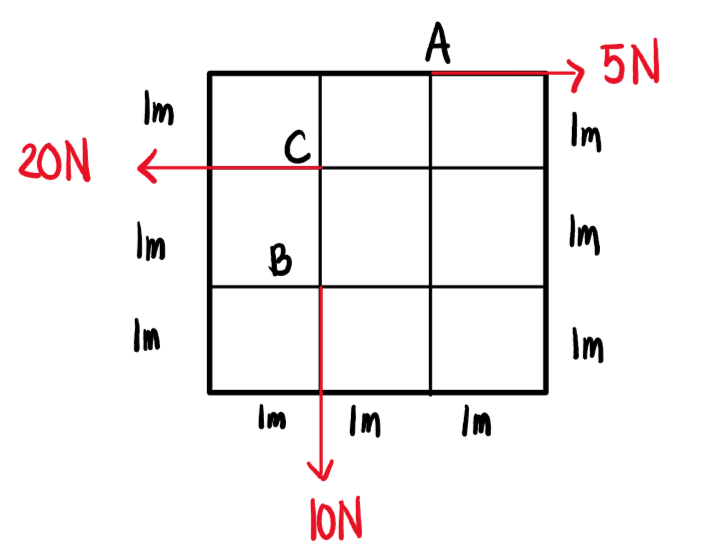


See images:
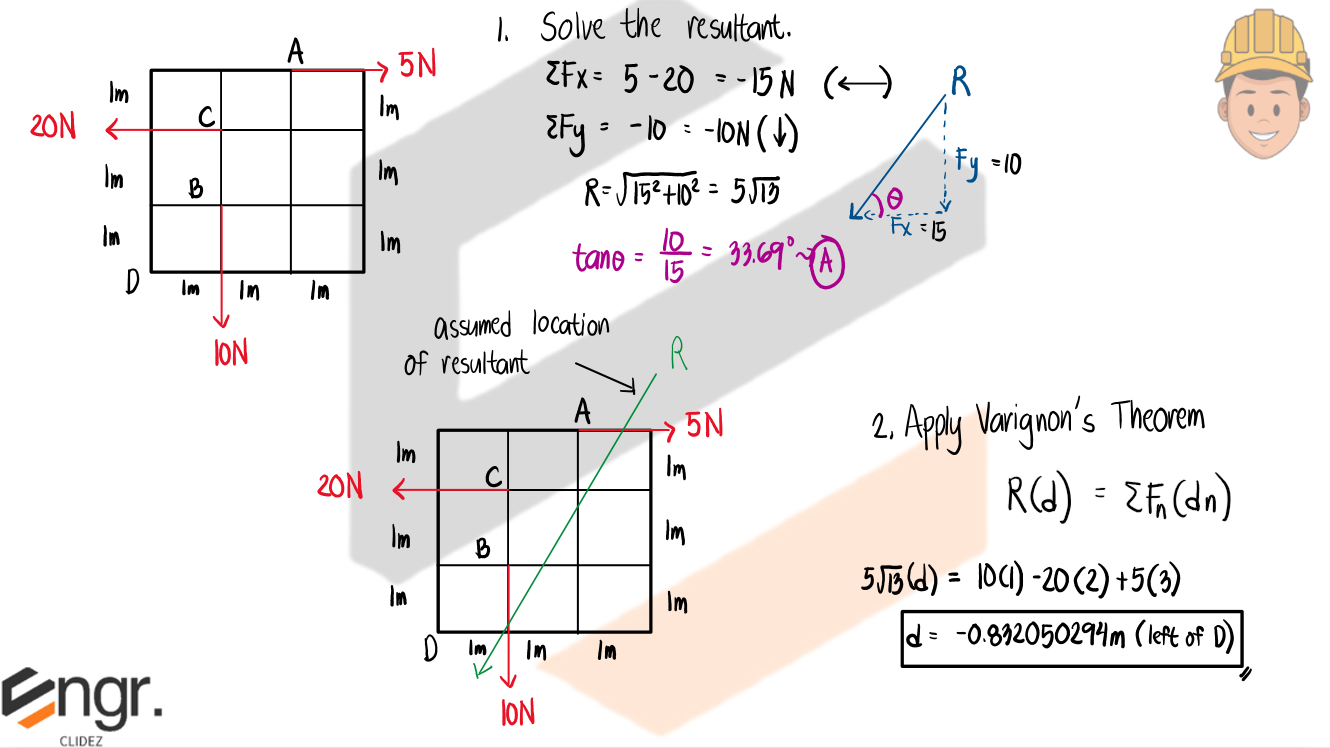
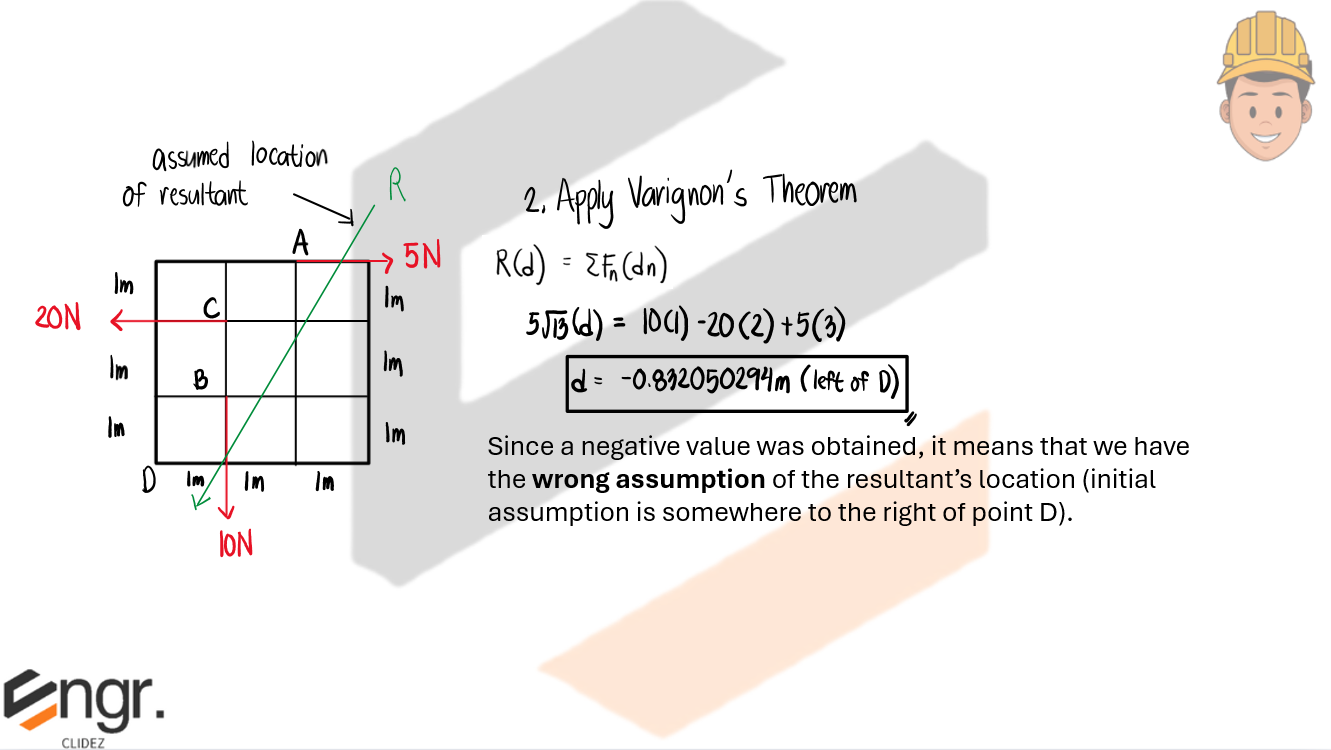
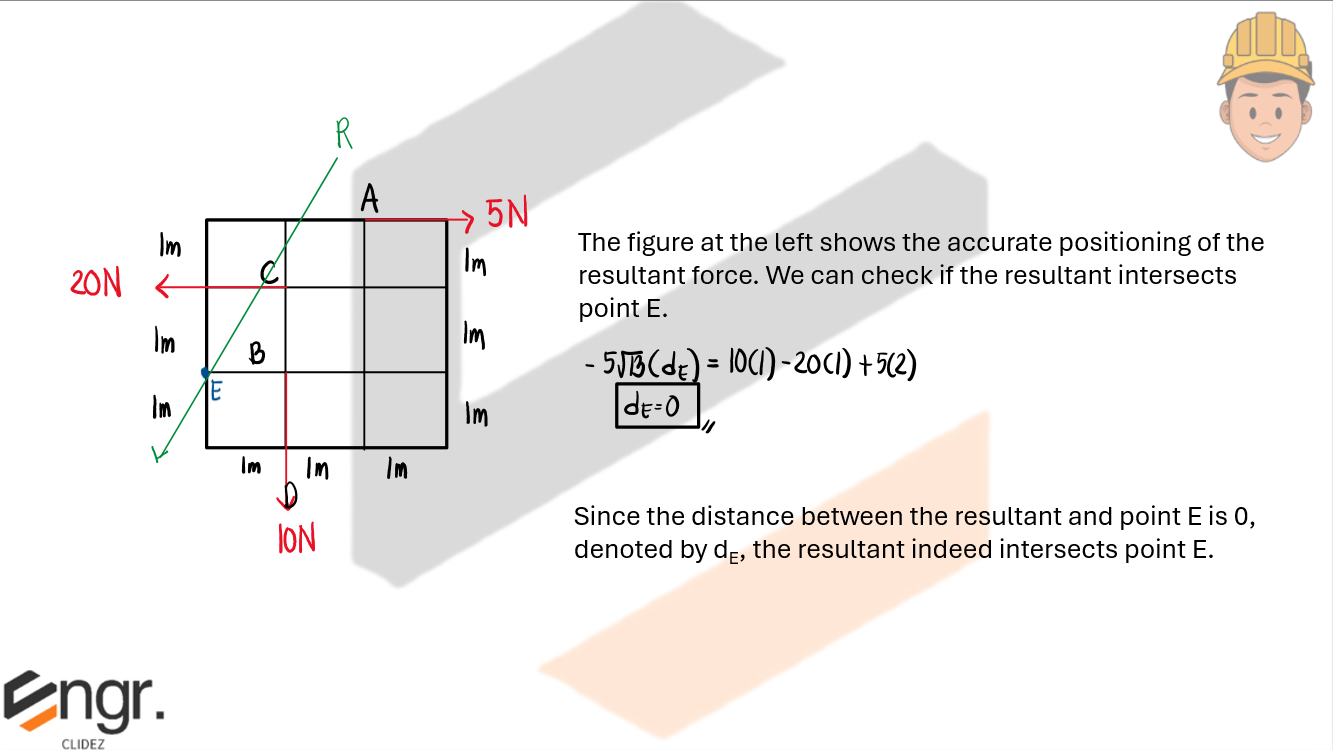
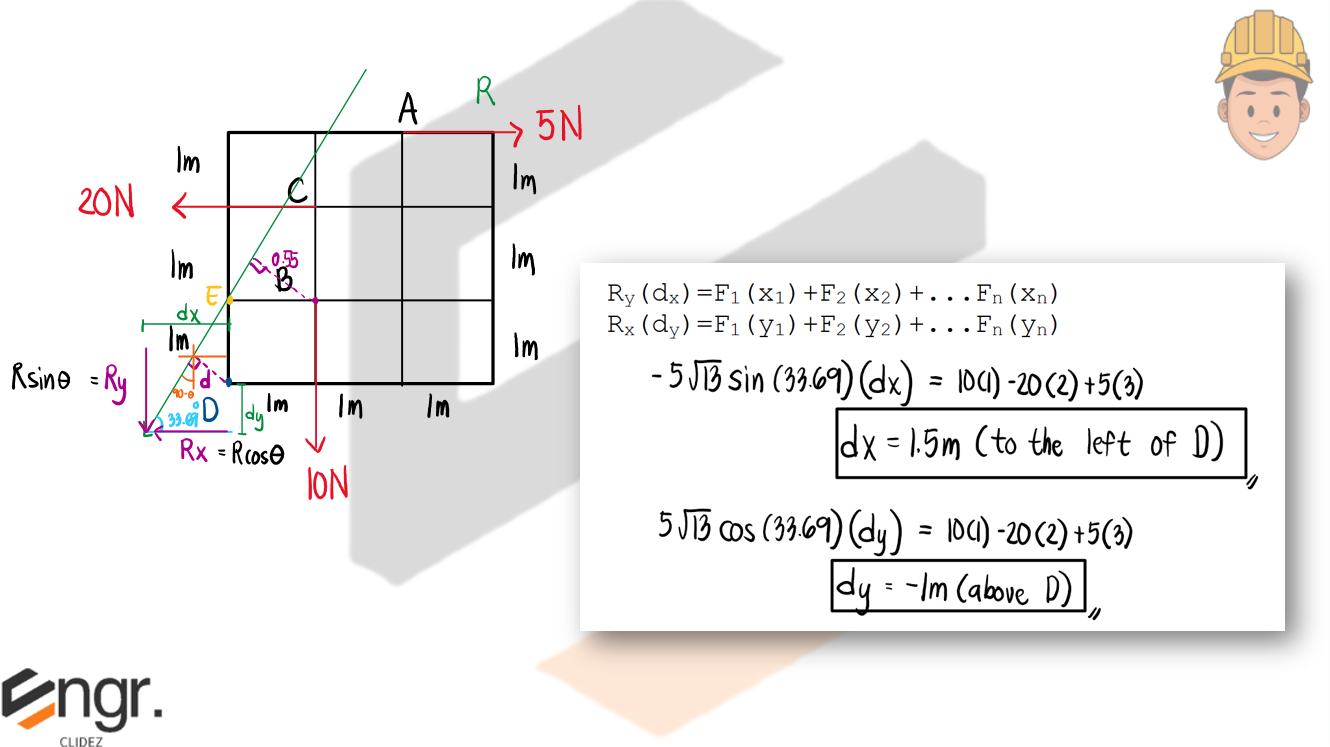
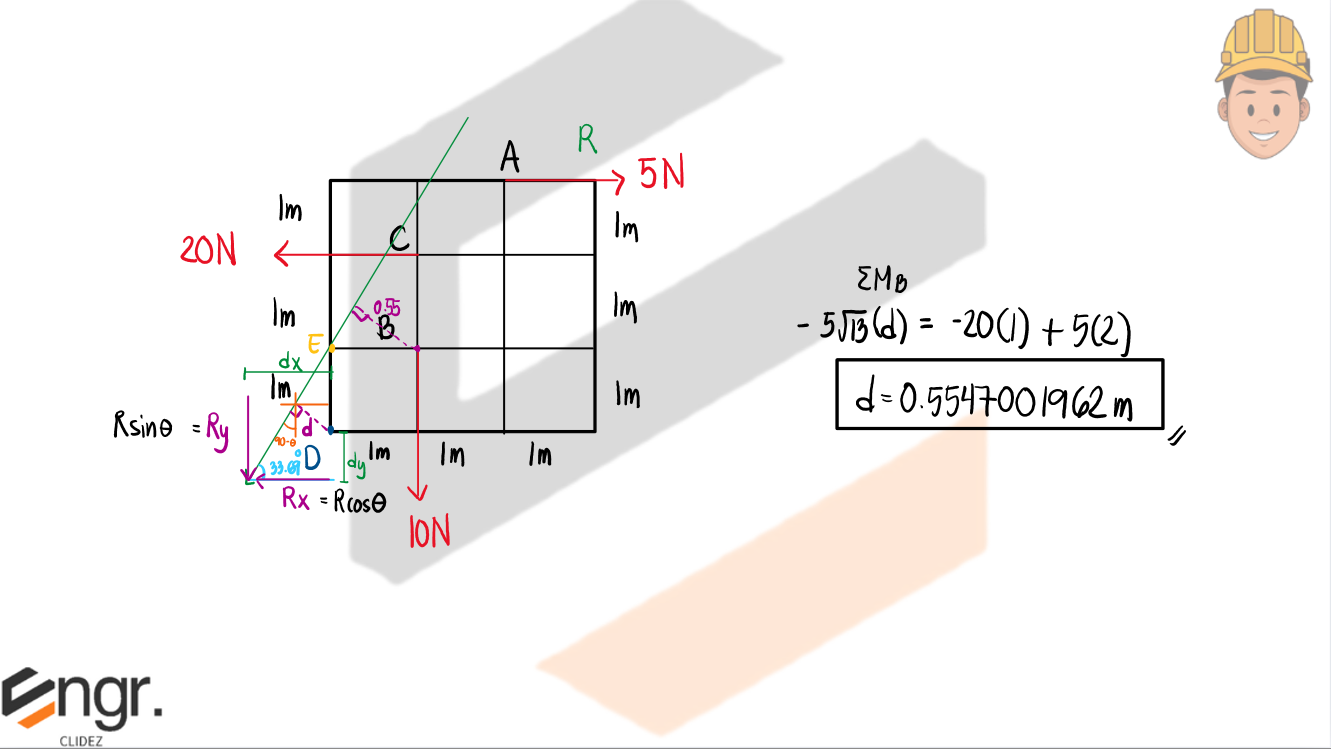
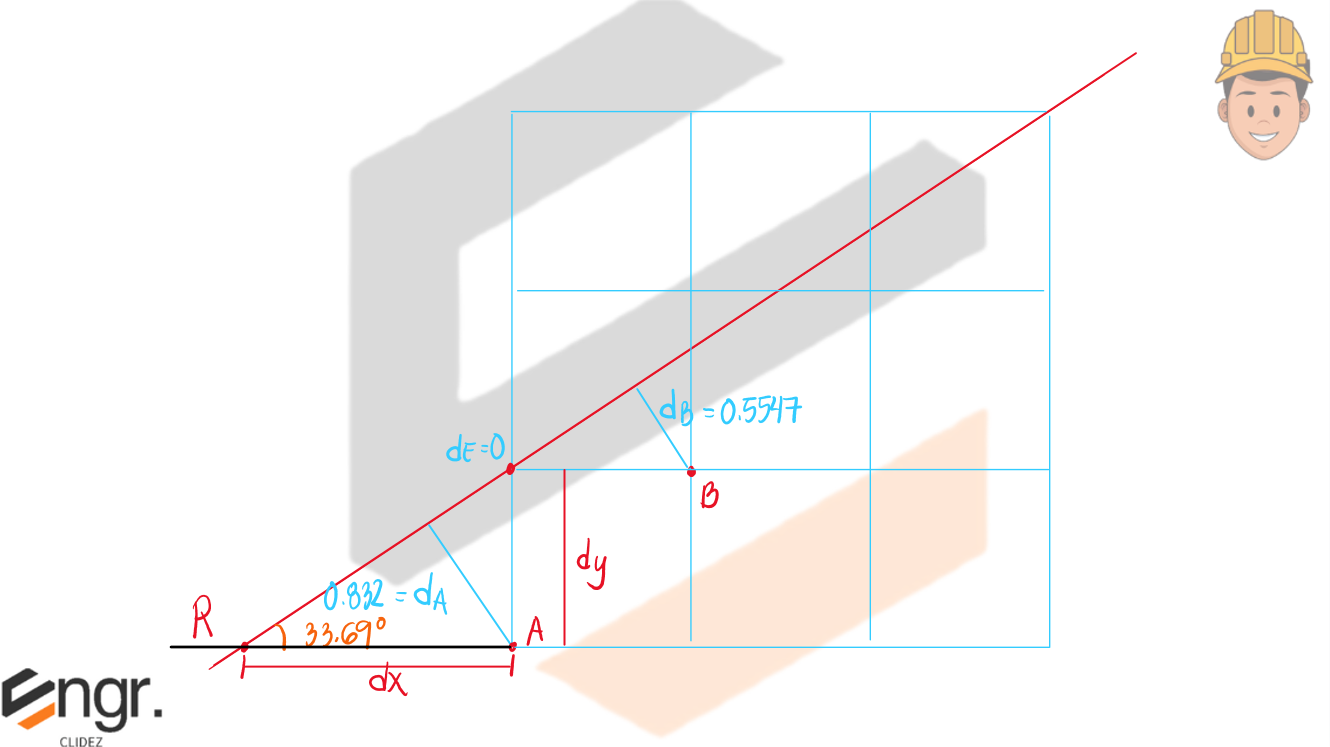
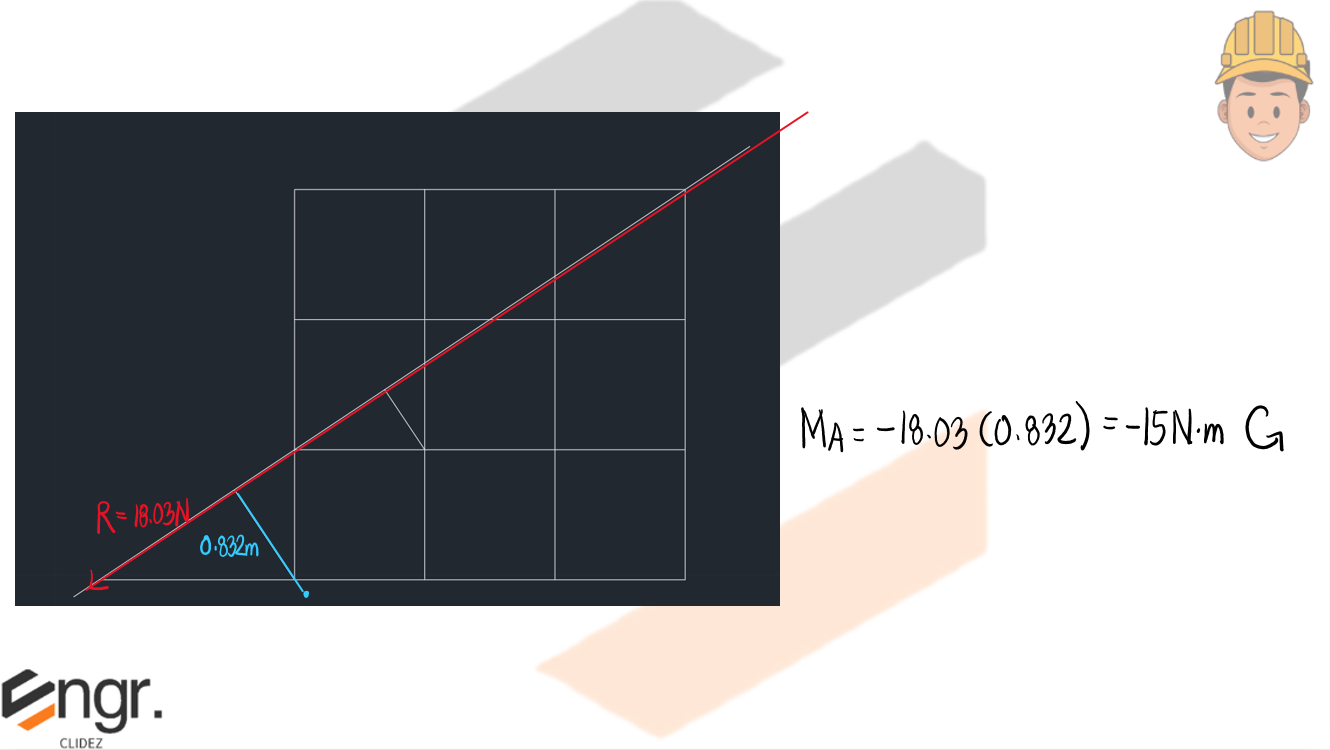
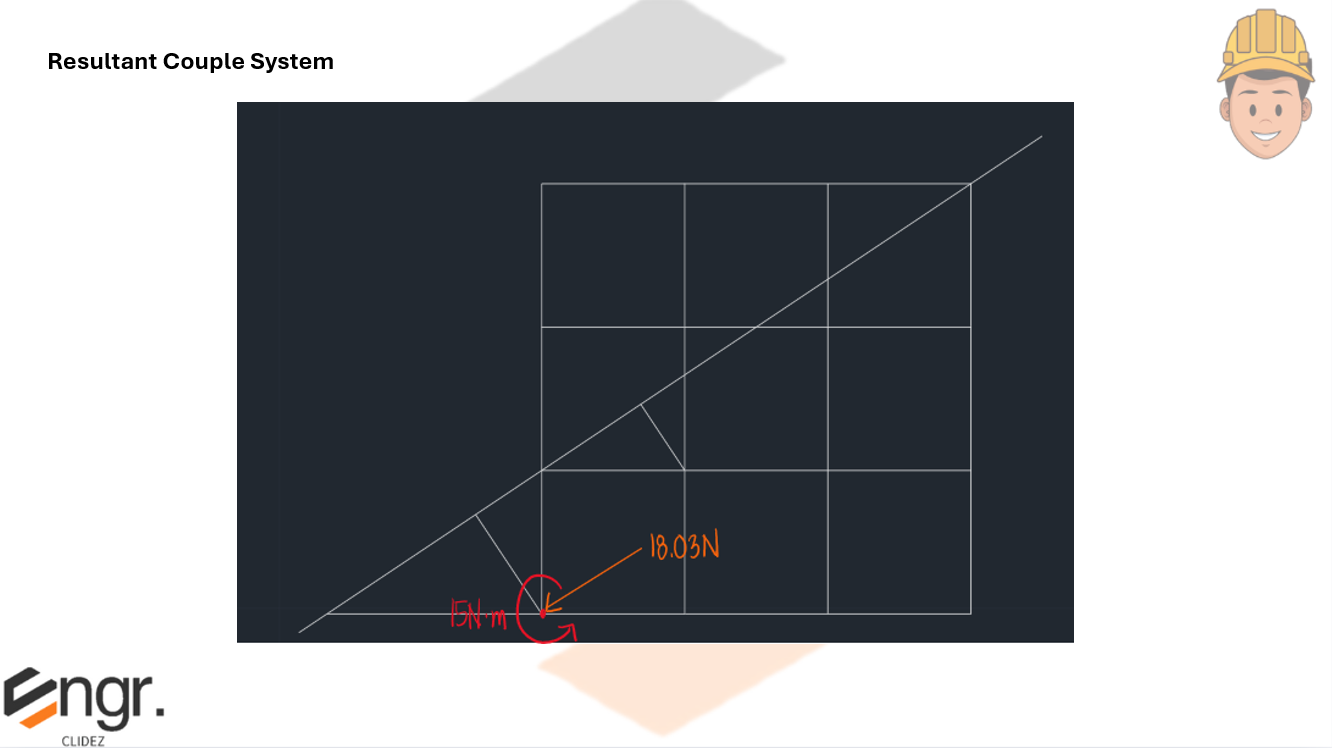
For the beam shown, beam ABC is supporting beam CD.
Which of the following most nearly gives the reaction at C in kN.
A. 250
B. 150
C. 100
D. 200
Which of the following most nearly gives the reaction at D in kN.
A. 250
B. 150
C. 100
D. 200
Which of the following most nearly gives the value of "x" if the reaction at B is 380 N.
A. 1
B. 1.5
C. 2
D. 3



See images:




Refer to the image shown:



See images:




Refer to the image shown:



See images:




Refer to the image shown:



See images:




Refer to the image shown:



See images:




Refer to the image shown:



See images:




Refer to the image shown:



See images:



